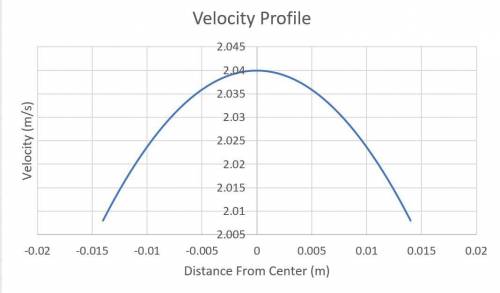
Physics, 18.03.2021 01:10 hipstersale4913
Your heart pumps blood into your aorta (diameter 2.5 cm) with a maximum flow rate of about 500 cm^3/s. Assume that blood flow in the aorta is laminar (which is not a very accurate assumption) and that blood is a Newtonian fluid with a viscosity similar to that of water.
a. Find the pressure drop per unit length along the aorta. Compare the pressure drop along a 10 cm length of aorta to atmospheric pressure (105 Pa).
b. Estimate the power required for the heart to push blood along a 10 cm length of aorta, and compare to the basal metabolic rate of 100 W.
c. Determine and sketch the velocity profile across the aorta (assuming laminar flow). What is the velocity at the center

Answers: 3


Another question on Physics

Physics, 22.06.2019 09:20
Question 11 of 13 (1 point) jump to question: a stairway, ladder, or ramp must be present in excavations in which of the following situations? a. all trenches must have access/egress b. the trench is more than 15 feet wide but only 1 ½ feet deep c. the trench is more than 4 feet deep and the devices must be within 25 feet of all workers
Answers: 1


Physics, 22.06.2019 16:00
The frequency of the fundamental of the guitar string is 320 hz. at what speed v do waves move along that string?
Answers: 2

Physics, 22.06.2019 16:30
In a classical model of the hydrogen atom, the electron moves around the proton in a circular orbit of radius 0.053 nm. what is the electron's orbital frequency? what is the effective current of the electron?
Answers: 3
You know the right answer?
Your heart pumps blood into your aorta (diameter 2.5 cm) with a maximum flow rate of about 500 cm^3/...
Questions












Mathematics, 06.05.2020 20:28



Mathematics, 06.05.2020 20:28


Social Studies, 06.05.2020 20:28



Mathematics, 06.05.2020 20:28



 = 10⁵ Pa, we have;
= 10⁵ Pa, we have;
 = The velocity at the center
= The velocity at the center
![v(r) = v_m \cdot \left[1 - \dfrac{r^2}{R^2} \right]](/tpl/images/1195/7598/80a86.png)
![v(r) = 2.04 - \dfrac{2.04 \cdot r^2}{0.0125^2} \right] = 2.04 - 163\cdot r^2](/tpl/images/1195/7598/e42d7.png)



